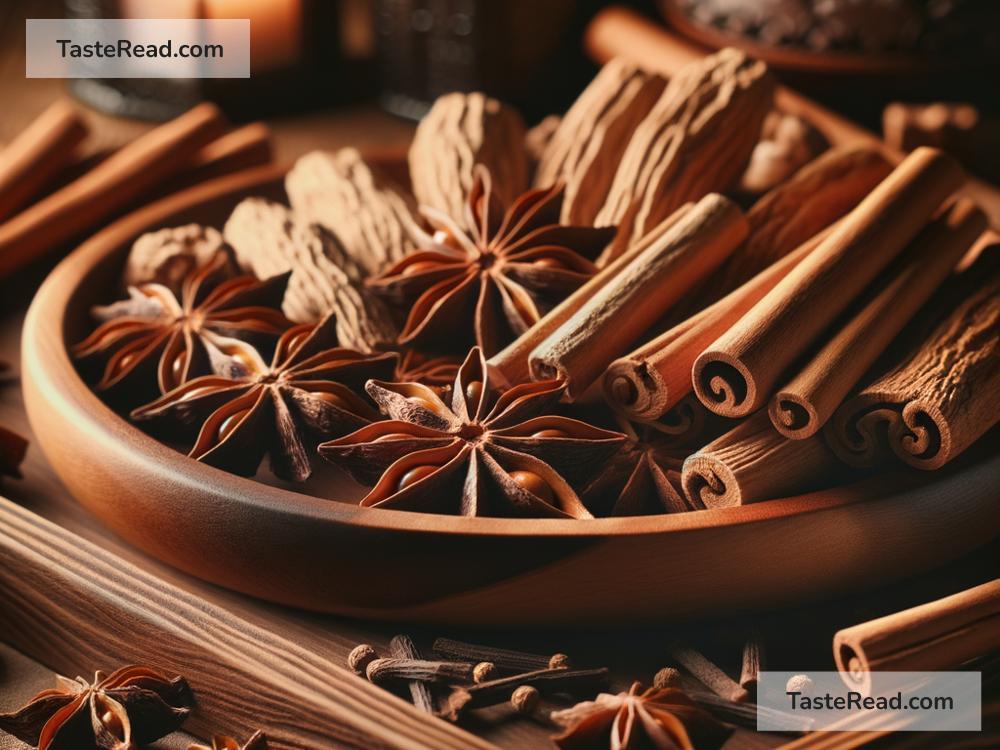The Surprising Link Between Star Anise and Licorice Flavor
When you think of licorice, the flavor probably brings back memories of candy, herbal teas, or remedies for an upset stomach. But did you know that the taste associated with licorice isn’t always from licorice itself? There’s another ingredient that often mimics this distinct flavor: star anise.
Star anise is a spice with a unique shape—its pods resemble small stars, hence the name. It’s widely used in Asian cooking, especially in savory dishes and soups. At first glance, star anise and licorice might not seem related. One is a traditional candy flavor, and the other is a culinary spice. But these two share a surprising connection in their taste profiles. Let’s explore the link between star anise and licorice flavor and why they often spark confusion.
What Does Licorice Flavor Actually Come From?
When people talk about “licorice flavor,” they are often referring to the sweet, earthy, and slightly bitter taste associated with licorice root (Glycyrrhiza glabra). This root has been used for centuries in candy-making, herbal medicine, and teas. Licorice root contains a compound called glycyrrhizin, which is responsible for its distinct sweetness and flavor.
However, licorice isn’t the only ingredient that delivers this unmistakable taste. Many products come labeled as “licorice-flavored” but don’t include licorice root at all. Instead, manufacturers rely on other ingredients that provide a similar sensation—star anise being one of the most common stand-ins.
What Is Star Anise?
Star anise (Illicium verum) is a spice that comes from Southeast Asia. It is harvested from an evergreen tree, and the fruits are dried to form the characteristic star-shaped pods. Inside these pods are seeds that contribute to star anise’s bold, aromatic taste, reminiscent of licorice. This flavor comes from a compound called anethole, which star anise shares with licorice root.
Because of its versatility, star anise is used in a variety of dishes and beverages. Its slightly sweet and spicy notes make it ideal for flavoring soups, curries, baked goods, and even mulled wine. It also plays a critical role in spice blends like Chinese five-spice powder and garam masala.
The Science Behind the Shared Flavor
The reason star anise and licorice taste similar can be traced back to chemistry. Both ingredients contain anethole, a natural organic compound responsible for their sweet, licorice-like taste and aroma. Anethole is also found in other plants like fennel and anise seed, adding yet another dimension to the flavors we often associate with licorice.
Despite their flavor similarities, star anise and licorice root are not related botanically. Licorice is part of the legume family, while star anise comes from an entirely different tree species. Yet, thanks to the shared presence of anethole, the two ingredients taste strikingly alike. This is why star anise is often used as a substitute for licorice root in recipes or products where true licorice isn’t available—or is too pricey to use.
Star Anise in Medicinal and Culinary Applications
Like licorice, star anise has long been used for medicinal purposes. It is believed to aid digestion, reduce bloating, and help with colds and coughs. In fact, its medicinal uses mirror some of the reasons people turn to licorice root when they’re unwell. Both ingredients can calm the stomach, soothe the throat, and provide a feeling of warmth or comfort.
In the culinary world, star anise shines bright. It’s a star ingredient (pun intended) in dishes like Vietnamese pho, Singaporean curry, and French duck confit. While its licorice-like flavor stands out, it harmonizes beautifully with other spices, bringing depth and complexity to meals.
When it comes to desserts and drinks, star anise often steps into the spotlight as well. It’s a beloved component of chai tea, spiced cookies, and seasonal warm beverages like mulled cider.
Why the Confusion?
One reason for the confusion between star anise and licorice root may come from commercial labeling. Many candies, teas, and syrups that claim to be licorice-flavored don’t always contain actual licorice root; instead, they use star anise or anise seed because these ingredients are more readily available and affordable. Since star anise delivers that same anethole-based flavor, most people don’t know the difference.
Another reason for the mix-up might simply be that anethole is such a defining flavor. Whether it comes from star anise, licorice root, or fennel, the taste and aroma is distinctive enough to blur the lines between the ingredients responsible for it.
A Flavor Worth Exploring
Whether you’re enjoying licorice candies or stirring star anise into homemade curry, you’re experiencing anethole—a taste sensation found across multiple plants. Even though licorice root and star anise come from different origins, their shared flavor compound ties them together in a surprising and delightful way.
Next time you sip on a cup of herbal tea or savor a spiced dessert, take a moment to appreciate the magic of these flavorful ingredients. Who knew that a humble spice like star anise could so closely mimic the bold and nostalgic taste of licorice? It’s yet another example of how nature surprises us with its complexity and versatility.
So, whether you’re a fan of the licorice-like flavor or more intrigued by the chemistry behind it, star anise deserves a spot in your kitchen—and maybe your curiosity too.


